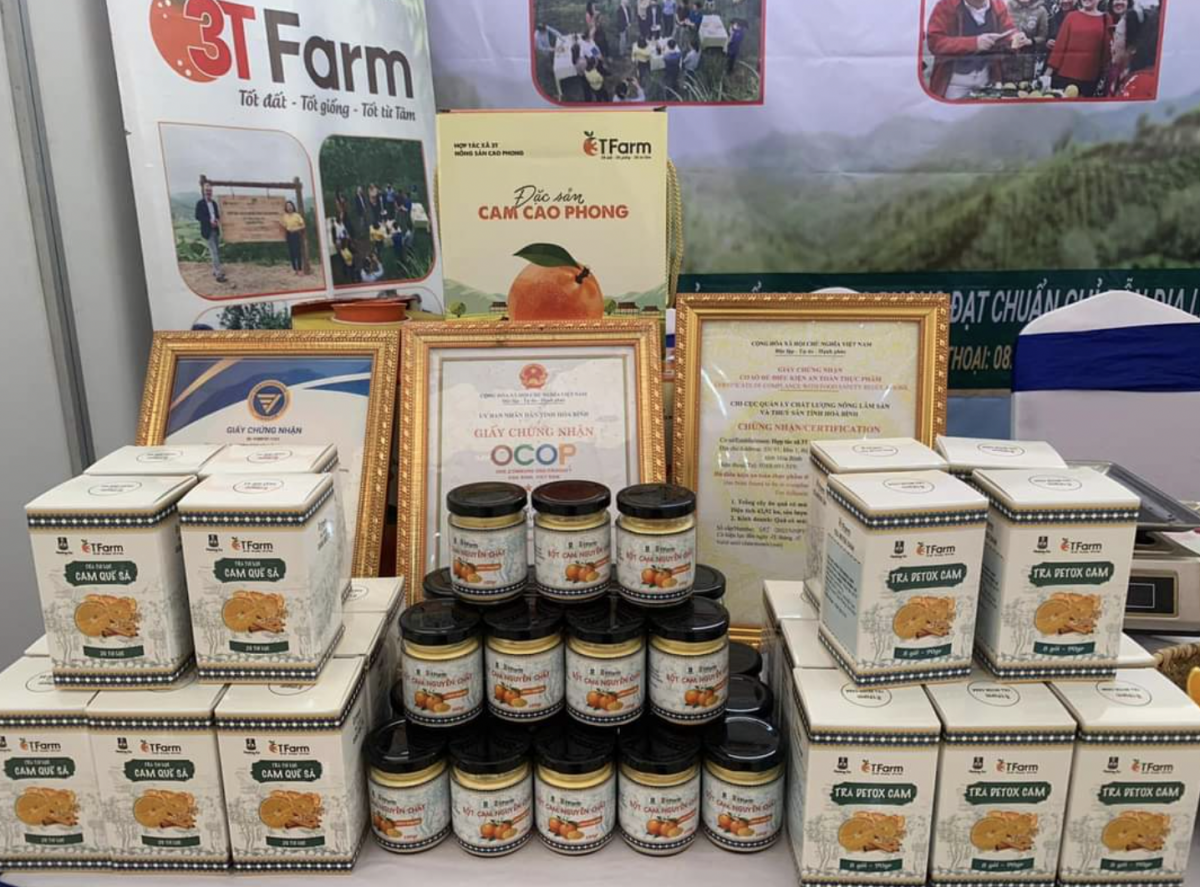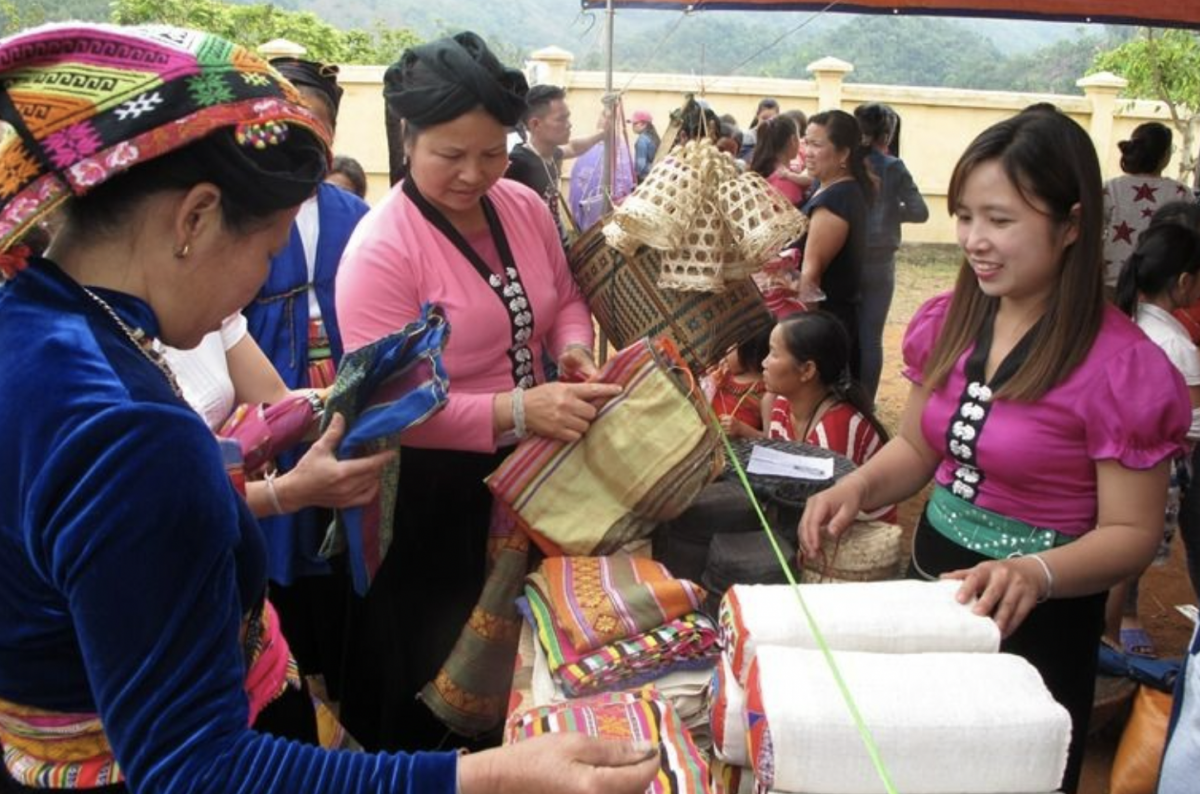
Vietnam to review over 20 years of Resolution 36 on overseas Vietnamese
19:05 | 23/03/2025 16:32 | 23/12/2025News and Events
Digital gateway for local products
From humble market stalls in remote highlands to dazzling online storefronts, local specialties from Hoa Binh Province are undergoing a remarkable transformation. In places where dried bamboo shoots, sticky rice, and brocade fabrics once confined within the borders of villages, these culturally rich products are now reaching nationwide markets and aiming toward the global stage.
It’s no coincidence that e-commerce is regarded as a “gateway to equality” in the digital age. For mountainous provinces like Hoa Binh, where rugged terrain and high logistics costs pose challenges, e-commerce platforms are a strategic solution to bridge market gaps. When properly utilized, virtual stores can serve as real bridges for selling tangible products.
Hoa Binh Province currently boasts over 200 OCOP (One Commune One Product) items, most of which are produced by ethnic minority households. Premium products like Kim Boi yellow-flowered sticky rice, Da Bac dried bamboo shoots, Mai Chau brocade, and Lac Son jar wine reflect the essence of the local land’s craftsmanship. Yet, in practice, most of these goods are still distributed through traditional channels, heavily reliant on middlemen or on-site tourism.
 |
| The biggest obstacles for cooperatives, production groups, and small businesses in highland areas are not just digital skills, but also a cautious mindset. (Illustrative photo) |
Many products lack standard packaging, traceability stamps, or clear online information. Limited digital skills and unfamiliarity with online marketing prevent local producers from bringing their products to e-commerce platforms. Moreover, fierce competition from other regions’ goods poses a major challenge for Hoa Binh’s products to stand out without proper investment.
The biggest obstacles for cooperatives, production groups, and small businesses in highland areas are not just digital skills, but also a cautious mindset. Many people are still skeptical that a smartphone can help them sell dried bamboo or brocade scarves. Taking product photos, writing compelling descriptions, managing inventory, and closing online orders, all are considered foreign for many villagers.
Technical support staff are in short supply. Most remote communes lack dedicated digital transformation officers. Internet infrastructure remains unstable in many villages. Meanwhile, the Government’s support programs remain fragmented and lack sustained follow-up, limiting the long-term effectiveness of highland e-commerce models.
Opportunities arise from desire to master market
Yet, amid these challenges, several cooperatives have became pioneers in the digital market. A case in point is the Dong Ruong Xanh Organic Agriculture Cooperative in Kim Boi District, whose dried bananas, organic rice, and clean vegetables now feature standardized packaging, QR codes for traceability, and listings on e-commerce platforms. Beyond just selling, the cooperative also organizes regular livestream “order-closing” sessions, inviting local villagers to act as brand ambassadors for their own products.
In Mai Chau District, the Chieng Chau Brocade Weaving and Tourism Services Cooperative takes a storytelling approach. Each scarf, bag, or pillowcase is not merely a commodity, but a cultural fragment, “digitized” via QR codes and showcased on e-commerce platforms, ready to serve both domestic and international customers. This model, combining weaving, tourism, and e-commerce, is paving a new path for many traditional craft villages.
Recognizing e-commerce as a new growth driver for highland economies, Hoa Binh Province is implementing a range of comprehensive measures. According to Nguyen Thi Thu Ha, Head of the Trade Management Division of Hoa Binh’s Department of Industry and Trade, trade promotion in the digital era must go hand-in-hand with digital transformation. This is an unwavering direction the department is committed to heading towards.
 |
| Each scarf, bag, or pillowcase is not merely a commodity, but a cultural fragment, “digitized” via QR codes and showcased on e-commerce platforms, ready to serve both domestic and international customers. (Illustrative photo) |
The province is actively promoting e-commerce through flagship initiatives like the “Online Vietnamese Booth” and its local e-commerce platform at hoabinhtrade.gov.vn. To date, 138 products from 70 organizations have been listed on the platform.
“A virtual store is truly a gateway to real sales. We have been organizing training sessions on writing product descriptions, professional photography, and managing online storefronts for cooperatives and small businesses. In addition, we are working to improve packaging quality, implement QR traceability, and ensure compliance with technical standards and food safety regulations for products sold online,” Nguyen Thi Thu Ha shared.
Furthermore, the province is piloting a “village digital agency” model. Each cooperative will serve as a digital guide, supporting nearby households in online selling. This network of “digital nuclei” will extend the Government’s reach, bringing digital transformation to every home and farm plot.
However, bringing ethnic minority products onto e-commerce platforms is not merely about sales. It reflects a shift in development thinking. It is a fusion of culture and technology, of tradition and modernity. Hoa Binh Province is steadily building a sustainable digital trade ecosystem for highland areas, where local residents are not only producers, but also sellers, marketers, and stewards of indigenous heritage.
This vision calls for stronger support from major e-commerce enterprises, tech platforms, and especially long-term policy backing from the central government. Flexible financial mechanisms are needed to invest in digital infrastructure for mountainous areas; practical, specialized training programs should be designed for specific product groups and user profiles; and tailor-made digital transformation roadmaps must align with local characteristics.
Only when Muong, Dao, and Thai people can proudly introduce their handcrafted goods with a single click, when brocade, dried bamboo shoots, and jar wine reach urban consumers without middlemen, will e-commerce truly become a catalyst for a self-reliant, innovative, and sustainable local economy.
Going digital is not merely about technology; it’s a shift in mindset and a step toward owning the future. When ethnic minority communities can tell the stories of their villages on digital platforms, and when traditional ways of life blend with the pace of modernity, their products do more than sell, carrying and promoting an entire culture. It’s a quiet, proud, and sustainable takeoff.
| E-commerce is no longer a “foreign land” for ethnic minorities in Hoa Binh Province. From secluded villages nestled against rocky mountainsides, local products, be it dried bamboo shoots, brocade bags, or jars of traditional wine, have now found their way into the digital space and reached broader markets. This journey is not merely a shift in economic practices, but a vivid testament to a proactive and increasingly integrated Hoa Binh Province, where digital commerce is emerging as a gateway to sustainable livelihoods for the mountainous highlands. |

19:05 | 23/03/2025 16:32 | 23/12/2025News and Events

19:05 | 23/03/2025 16:30 | 23/12/2025Trade

19:05 | 23/03/2025 23:26 | 22/12/2025Industry

19:05 | 23/03/2025 23:19 | 22/12/2025News and Events

19:05 | 23/03/2025 14:41 | 22/12/2025News and Events